Flossing with braces is essential for maintaining optimal oral health and preventing gum disease and tooth decay. While it may seem daunting at first, there are several methods that can make flossing with braces an easy and comfortable process.
One common technique involves using regular floss with a floss threader. Simply thread the floss through the plastic needle and carefully guide it under the brace wire. Gently move the floss up and down between each set of teeth, ensuring to eliminate any plaque or food particles.
Another option is using a water flosser. These devices use a stream of water to clean between the teeth and along the gumline. Fill the reservoir with water and aim the water stream at a 90-degree angle to the gums. Move the tip along the gumline and in between the teeth, ensuring that all areas are thoroughly cleaned.
When flossing with braces, it’s important to take extra care and adopt a diligent routine. Aim to floss at least once a day, preferably before brushing. Use a dental floss or tape that is specifically designed for braces.
In addition to flossing, maintain good oral hygiene habits such as brushing with fluoride toothpaste, using an electric toothbrush, and rinsing with mouthwash. Regular dental visits are also crucial to monitor your dental health.
In conclusion, flossing with braces is crucial for oral health. Whether you prefer traditional flossing with a floss threader, or using a water flosser, incorporating daily flossing into your oral care routine will help ensure a confident smile and healthy teeth and gums.
Traditional Flossing
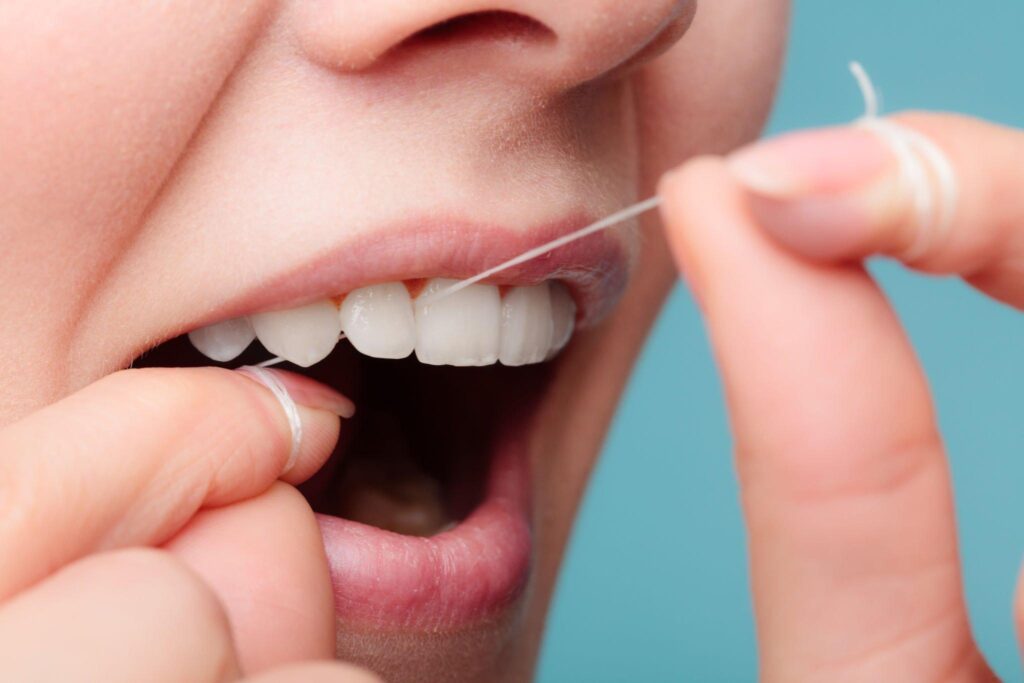
Traditional flossing remains a popular and effective method for maintaining oral health, even with braces. While there are various innovative tools available, using regular floss with a floss threader is a tried-and-true technique. By threading the floss through the plastic needle, you can easily guide it under the brace wire to remove plaque and food debris.
Take care to move the floss up and down in between each pair of teeth, ensuring a thorough clean. Adopting a diligent flossing routine and using dental floss or tape specifically designed for braces at least once a day, preferably before brushing, will help keep your braces clean and reduce the risk of gum disease and tooth decay.
Remember to also maintain good oral hygiene habits such as brushing with fluoride toothpaste, using an electric toothbrush, rinsing with mouthwash, and visiting your dentist regularly to ensure a confident smile and optimal dental health.
How to use traditional floss with braces
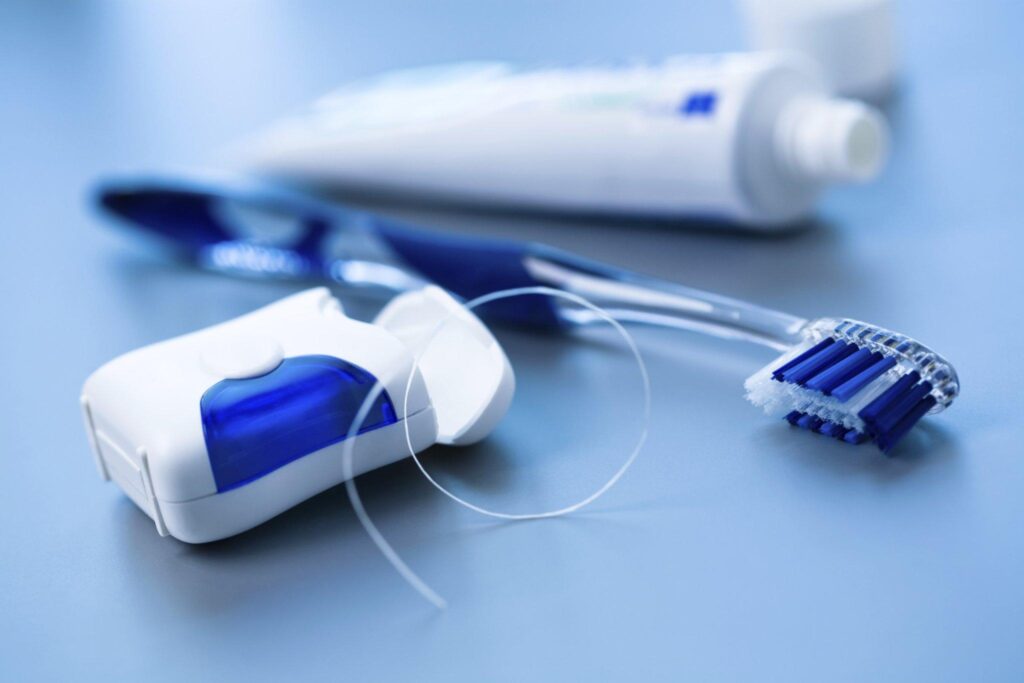
Using traditional floss with braces is an important part of maintaining good oral hygiene. It can be a bit challenging at first, but with practice, you’ll become comfortable flossing with braces. Here’s a step-by-step guide to help you:
- 1. Start by cutting an 18 to 24-inch piece of traditional floss. This length is ideal for maneuvering around your braces effectively.
- 2. Take the piece of floss and carefully thread it between the braces and your teeth, being mindful to avoid any potential damage to the braces or discomfort to your gums.
- 3. Once the floss is threaded, wrap the ends of the floss around your index fingers. This will give you better control and allow you to move the floss smoothly.
- 4. With the floss securely wrapped around your fingers, gently slide it up and down between your teeth. Follow the natural curve of the teeth and make an upside-down “U” shape for the top teeth. Be sure to reach both sides of each tooth, removing any plaque or food particles.
- 5. When you reach the wire of your braces, carefully unthread the floss from behind the wire without popping it out of the bracket. This may require a bit of patience, but with practice, you’ll become more skilled at maneuvering the floss around the braces.
By following these steps and practicing daily flossing with traditional floss, you can effectively remove plaque buildup and reduce the risk of gum disease and tooth decay. With regular flossing, your braces will stay clean, and your dental health will be in tip-top shape, giving you a confident smile. Remember to also brush your teeth twice a day with fluoride toothpaste and take extra care of your oral hygiene throughout your orthodontic treatment.
Pros of Traditional Flossing
Traditional flossing with braces offers numerous benefits that can contribute to optimal oral health during orthodontic treatment. While alternative options such as floss threaders or water flossers are available, traditional flossing remains an efficient and reliable method for removing food debris and maintaining oral hygiene.
One of the advantages of traditional flossing is its ability to effectively remove food debris from all surfaces of the teeth. By threading the floss carefully between the braces and teeth, you can reach any face of the teeth that may have accumulated plaque or food particles. This thorough cleaning helps to prevent the risk of gum disease and tooth decay, ensuring a healthy smile.
Another advantage of traditional flossing is the convenience it offers. Unlike specialized flossing tools, traditional floss can be taken with you anywhere, anytime. Whether you’re at home, work, or traveling, having standard string floss readily available allows you to maintain your oral hygiene routine consistently. With regular and daily flossing, you can confidently tackle any food debris that gets trapped in your braces.
In conclusion, traditional flossing with braces provides an efficient method for removing food debris and maintaining oral health. Its ability to reach all surfaces of the teeth, combined with the convenience of standard string floss, makes it a recommended choice for individuals undergoing orthodontic treatment. With proper and regular flossing, you can keep your braces clean, minimize the risk of gum disease, and enjoy a healthy and confident smile.
Cons of Traditional Flossing
While traditional flossing with braces offers many benefits, there are also some cons that you should be aware of. One potential drawback is the risk of gum bleeding and swelling. The delicate gum tissues can become irritated when floss is threaded through the brackets, leading to bleeding and discomfort. Additionally, the pressure exerted during flossing can cause the gums to swell, making it even more challenging to maneuver the floss around the braces.
Another concern is the potential for damaging the braces themselves. The wires and brackets can be sensitive, and if the floss is not carefully maneuvered, it can get caught or snap against them, causing damage or even dislodging the braces.
Furthermore, traditional flossing with braces can be difficult and time-consuming. The process of manually moving the floss around each bracket and wire requires patience and precision. It can take longer to completely remove food particles and plaque from between the teeth than with alternative flossing methods, such as floss threaders or water flossers.
While traditional flossing remains a reliable option for maintaining oral hygiene with braces, it’s important to be aware of these potential drawbacks and address them with extra care and caution to achieve a confident smile and optimal dental health.
Waterpik or Oral Irrigator
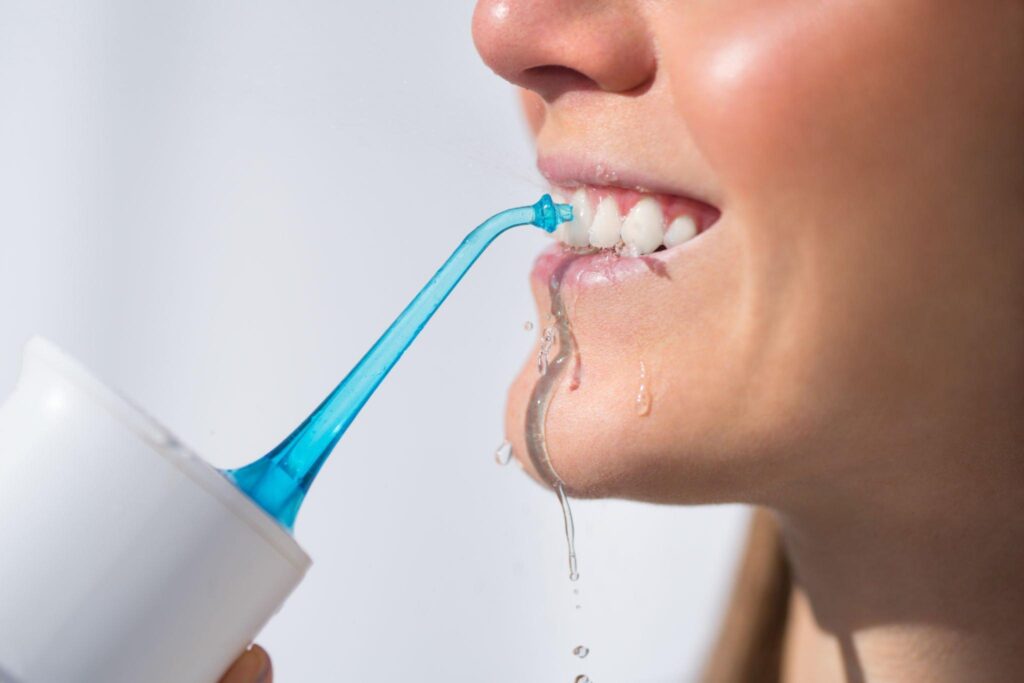
When it comes to maintaining oral hygiene with braces, traditional flossing can be tedious and challenging, leaving room for alternative methods that can make the process easier and more effective. One such method is using a water flosser, also known as a Waterpik or oral irrigator.
This innovative tool uses a stream of water to remove food particles and plaque from between the teeth and along the gumline, providing a gentle and efficient way to keep braces clean. In this article, we will explore the benefits of using a water flosser for braces and provide step-by-step instructions on how to effectively floss with this tool to ensure optimal dental health and a confident smile.
How to use a Waterpik for Flossing
Flossing with braces can be a bit challenging, but using a Waterpik can make the process much easier and more effective. The Waterpik is an oral irrigator that utilizes a steady stream of water to remove plaque and food particles from hard-to-reach places.
To floss with a Waterpik, follow these simple steps:
1. Begin by filling the Waterpik’s reservoir with water. You can also add mouthwash to the water for additional antibacterial benefits.
2. Lean over the sink and place the tip of the flosser in your mouth, ensuring that your lips are closed to avoid splashing.
3. Turn on the Waterpik and start with the lowest water pressure setting. You can gradually increase the pressure as you become more comfortable.
4. Glide the water stream along the gumline and in between each tooth. Pay extra attention to the areas around the brackets and wires of your braces.
5. Move the tip of the flosser in a slow, sweeping motion to gently brush the tooth and brackets. This will help dislodge any trapped food particles.
6. Repeat the process for all teeth, ensuring that you cover each tooth and bracket.
7. Once you have finished flossing, turn off the Waterpik and store it in a closed container to keep it clean and ready for next use.
Flossing with a Waterpik can greatly improve your oral hygiene while wearing braces. By effectively removing plaque buildup and food debris, you can reduce the risk of gum disease and tooth decay. Remember to also maintain a regular brushing routine with fluoride toothpaste and visit your orthodontist regularly for check-ups. With proper oral care, you can achieve a confident smile and maintain good dental health throughout your orthodontic treatment.
Floss Threader
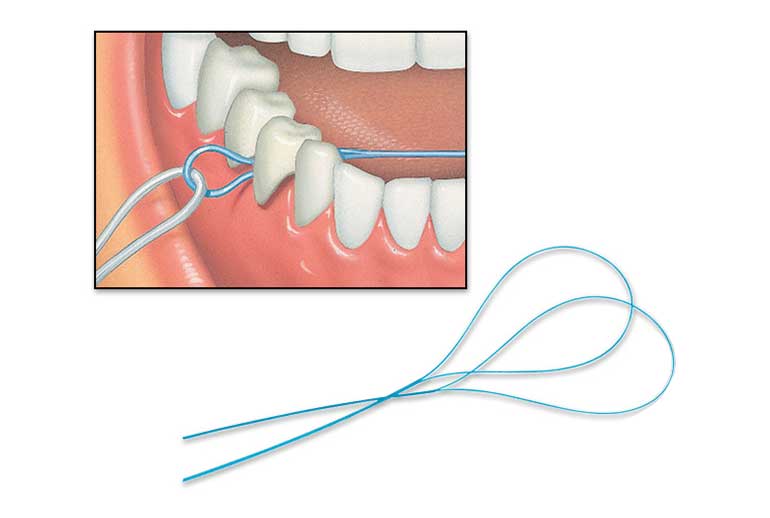
Floss threaders are a handy tool for individuals with braces who want to maintain good oral hygiene. Braces can make traditional flossing a bit challenging, but using a floss threader can help make the process easier and more effective.
Floss threaders are simple yet effective tools that allow you to thread floss under the wires of your braces, enabling you to clean between your teeth and along the gumline. By incorporating a floss threader into your daily oral care routine, you can help prevent plaque buildup, reduce the risk of gum disease, and maintain a healthy smile.
Pros of a Floss Threader
Flossing with braces can be a bit tricky, but using a floss threader can make the task much easier and more effective. A floss threader is a cheap and accessible tool that allows for easy insertion of floss between teeth and braces.
One of the biggest advantages of using a floss threader is the ability to use reusable floss. Instead of using a piece of floss that can quickly get frayed or torn when flossing with braces, you can simply thread the floss into the threader and reuse it multiple times. This not only saves money but also reduces waste.
The floss threader also makes it much easier to thread the floss between the teeth and around the braces. The thin plastic needle of the threader easily glides between the spaces, helping to remove any food particles or plaque buildup. This eliminates the need to struggle with the floss, making the flossing process more comfortable and less time-consuming.
Additionally, a floss threader is a convenient tool for anyone to use. Whether you are a teenager undergoing orthodontic treatment or an adult with braces, the threader can be easily manipulated and maneuvered for effective flossing. Its durability ensures that it can withstand regular use without breaking or bending.
In summary, using a floss threader for flossing with braces has several pros. It allows for the use of reusable floss, makes threading easier and more comfortable, and is accessible to anyone in need of extra care for their dental hygiene. With a floss threader, you can confidently maintain your oral health and achieve a beautiful, healthy smile.
Cons of a Floss Threader
While using a floss threader for flossing with braces has its advantages, there are also some drawbacks to consider. One of the main drawbacks is that it can be time-consuming. The process of threading the floss through the threader and maneuvering it around the braces can take anywhere from 10 to 15 minutes, which can be quite long compared to traditional flossing methods.
Another downside is that using a floss threader can be complicated and require some learning. It may take time to get the hang of maneuvering the floss through the threader and effectively flossing between the teeth and around the braces. This learning curve can be frustrating for some individuals, especially those who are new to using a floss threader.
In addition, manipulating the floss through the threader may not always be as easy as it seems. The small plastic needle can be cumbersome to maneuver, especially in hard-to-reach areas of the mouth. This can make the flossing process more challenging and less comfortable for some individuals.
Despite these drawbacks, a floss threader can still be a useful tool for flossing with braces. It is important to consider your individual needs and preferences when choosing a flossing method that works best for you.
How to use a floss threader to floss with braces
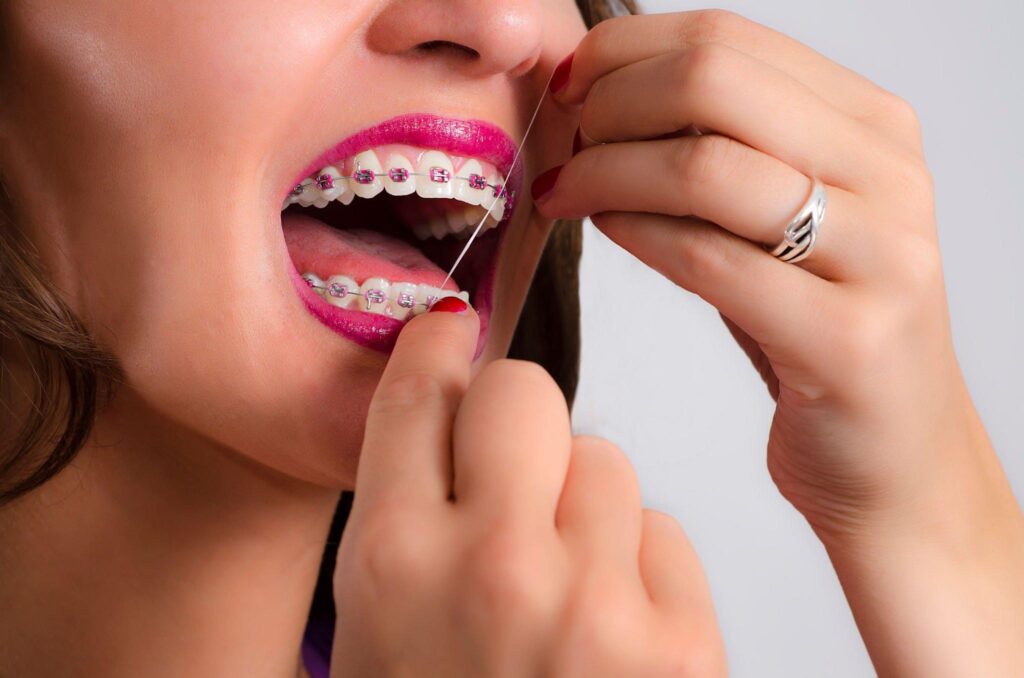
Flossing with braces can be difficult, but using a floss threader can help make it easier and more effective. A floss threader is a small, flexible tool that looks like a sewing needle. Here is a step-by-step guide on how to use a floss threader for flossing with braces:
1. Start by cutting an 18 to 24-inch piece of waxed floss. The wax coating helps the floss glide more easily between the teeth.
2. Take the floss threader and insert the plastic needle under the wire of your braces. Thread the floss through the eye of the threader.
3. Once the floss is threaded through the threader, gently pull it through so that you have an equal amount of floss on each side of the threader.
4. Wrap the ends of the floss around your index fingers for better control. Hold the floss tightly between your thumbs and index fingers.
5. Gently guide the floss threader between your teeth, making sure to go under the wire of your braces. Use a back-and-forth motion to remove any plaque or food particles.
6. Glide the floss up and down along the sides of each tooth, making sure to reach the gum line.
7. Repeat this process between each pair of teeth, using a fresh section of floss each time.
Flossing with braces is crucial for maintaining good oral hygiene and preventing gum disease and tooth decay. By using a floss threader, you can effectively remove plaque and food debris from hard-to-reach areas. Remember to floss at least once a day, preferably before bedtime, and combine it with regular brushing and fluoride toothpaste for optimal oral health.
Tips and tricks for flossing with braces
Flossing with braces requires some extra care and attention to ensure your teeth and gums stay healthy. Here are some general tips and tricks to make flossing with braces a breeze:
1. Use the right tools: Consider using a floss threader or a water flosser. A floss threader helps guide the floss under the wire of your braces, making it easier to reach between your teeth. Alternatively, a water flosser uses a stream of water to remove food particles and plaque.
2. Be gentle: When flossing around the wire of your braces, be careful not to apply too much pressure or pull the wire. This can cause discomfort or even damage to your braces. Take your time and be gentle as you navigate between each tooth.
3. Choose the right floss: Opt for waxed floss or dental tape as they are less likely to snag or get caught in your braces. The wax coating helps the floss glide between your teeth smoothly, cleaning along the gum line and removing plaque and food debris.
Remember, flossing with braces is essential to prevent plaque buildup, cavities, and gum disease. Make it a daily habit to keep your oral health in check and maintain a confident and healthy smile.
Water Flosser
Water flossers, also known as oral irrigators, are an effective tool for flossing with braces. These devices use a stream of water to remove food particles and plaque from between your teeth and around your braces. Using a water flosser can be especially beneficial for those who find traditional flossing challenging or uncomfortable.
The water pressure helps dislodge stubborn debris while massaging your gums and promoting better oral health. To use a water flosser, simply fill the reservoir with water, aim the tip at your gum line, and let the water stream do the work.
Move the tip along your gum line and between each pair of teeth, ensuring every area is thoroughly cleaned. Water flossers are a convenient and gentle option for maintaining good oral hygiene during orthodontic treatment, helping you achieve a confident smile while avoiding the risk of gum disease and tooth decay.
Pros of Water Flossers
Water flossers, also known as oral irrigators, have become a popular tool for flossing with braces. These devices offer several advantages and benefits that make them an excellent choice for maintaining oral hygiene during orthodontic treatment.
One of the key pros of water flossers is their ability to remove plaque and food particles effectively. With a stream of pulsating water, they dislodge and flush out debris from hard-to-reach areas around the braces and in between teeth. This minimizes the risk of gum disease and tooth decay caused by the buildup of plaque.
Another advantage is that water flossers involve minimal manual movement. Unlike traditional floss which requires threading between the braces and wire, water flossers simply require aiming the water stream along the gum line and teeth. This makes it an ideal option for those who find traditional flossing with braces cumbersome or challenging.
One significant benefit of water flossers is the reduced risk of gum bleeding. The gentle but effective water pressure gently massages the gums, promoting improved gingival health. This makes it suitable for individuals with sensitive gums or those who experience bleeding while flossing with traditional floss.
To enhance antibacterial protection, some water flossers allow the use of mouthwash in the water reservoir. This further aids in fighting bacteria and maintaining optimal dental health.
In conclusion, water flossers provide a convenient and effective alternative for flossing with braces. Their ability to remove plaque and food particles, minimal manual movement requirement, and reduced risk of gum bleeding make them an excellent choice for confident smiles during orthodontic treatment.
Cons of Water Flossers
While water flossers have their advantages for flossing with braces, there are also some cons to consider. One drawback is the cost. Water flossers can be more expensive upfront compared to other flossing tools like traditional floss or floss picks. Additionally, they may require regular maintenance and replacement of parts, leading to ongoing costs.
Another con is that water flossers may be less effective than traditional floss in removing plaque. While the water jet can dislodge larger food particles, it may not effectively remove plaque buildup between teeth and around the braces. Traditional flossing methods, such as using floss threaders or interdental brushes, allow for better maneuvering around orthodontic brackets and wires to ensure thorough plaque removal.
It’s also worth mentioning that water flossers can be messy to use. The water stream can sometimes splatter, leading to water residue on surfaces. Additionally, the water reservoir needs to be refilled, which can be cumbersome for some users.
Despite these cons, water flossers can still be a convenient and effective option for flossing with braces. It’s important to weigh the pros and cons and choose the method that best suits your needs and preferences, whether it’s water flossers, traditional floss, or other flossing tools.
Dental Tape

Dental tape is a specialized flossing tool that can be particularly useful for individuals with braces. Made from nylon and coated with wax, dental tape is wider and flatter than traditional floss, allowing it to easily penetrate between the teeth and braces. This makes it a great option for effectively removing plaque and food particles that can get trapped in hard-to-reach areas.
To use dental tape for flossing with braces, follow these steps:
1. Start by cutting a piece of dental tape, roughly 18 to 24 inches long. The wax coating on the tape helps it glide smoothly between the teeth and braces.
2. Hold one end of the tape tightly between your index fingers, and gently push it between the teeth and under the wire of your braces. Take care to avoid applying excessive force or pulling the wire.
3. Once the tape is in position, glide it up and down along the sides of each tooth, making sure to reach the gum line. This helps to remove any plaque or debris that may have accumulated.
4. Move to the next pair of teeth and repeat the process, using a fresh section of dental tape each time.
By utilizing dental tape as part of your daily oral care routine, you can effectively keep your braces clean and reduce the risk of gum disease or tooth decay. Remember to be gentle and thorough while flossing with braces, and always complement your flossing routine with brushing and regular visits to your orthodontist.
Pros of Dental Tape
When it comes to flossing with braces, dental tape emerges as a highly efficient and cost-effective option. Dental tape is a broader floss that offers several advantages in maintaining oral hygiene during orthodontic treatment.
One of the main pros of dental tape is its broader size. Unlike standard floss, dental tape is wider, allowing it to cover more surface area between the teeth. This broader size helps to remove food particles, plaque buildup, and bacteria from hard-to-reach areas in the mouth more effectively.
In addition to its efficiency, dental tape is also incredibly affordable. Compared to other flossing options such as floss threaders or water flossers, dental tape is a budget-friendly choice. Moreover, it tends to be long-lasting, providing excellent value for money.
Another advantage of dental tape is its high tensile strength. This means that it is less likely to break or fray while flossing, even when navigating around braces and wires. Its durability allows for a comfortable flossing experience without the need for frequent replacements.
To achieve a confident smile and maintain dental health during orthodontic treatment, it is essential to take extra care with oral hygiene. Choosing dental tape as a flossing tool ensures an efficient clean between teeth and along the gumline. So, grab a roll of dental tape and incorporate it into your daily flossing routine to keep your braces clean and your oral health in check.
Cons of Dental Tape
While dental tape has its advantages, it also has some cons when it comes to flossing with braces. One of the main drawbacks is that dental tape may cause bleeding gums. The wider size of dental tape can be abrasive on sensitive gum tissue, leading to irritation and bleeding. This can be particularly problematic for individuals with braces, as the brackets and wires can already cause some discomfort.
Additionally, the dental tape can potentially detach brackets from wires. The high tensile strength that makes dental tape durable can also exert significant pressure when used around braces. This pressure can inadvertently cause brackets to pop off or wires to come loose, disrupting the effectiveness of orthodontic treatment.
Moreover, dental tape may not be suitable for all individuals with braces. Those with sensitive gums or a history of gum disease may find that dental tape exacerbates their condition. Additionally, people who struggle with manual dexterity or have limited mobility in their hands may find it challenging to effectively maneuver dental tape around braces and wires.
Considering these factors, it’s important for individuals with braces to explore alternative flossing options that are more gentle and suitable for their unique circumstances. Consulting with an orthodontist or dentist can help determine the most appropriate flossing method to maintain good oral hygiene and prevent any complications during orthodontic treatment.
Is flossing with braces necessary? What happens if you don’t floss with braces?
Flossing with braces is absolutely necessary for maintaining good oral health. Failure to floss properly while wearing braces can lead to serious consequences.
Braces create an environment where food particles and plaque can easily get trapped. This can lead to an increased risk of gum disease and plaque buildup. Without regular flossing, these particles can remain lodged between teeth and braces, providing a perfect breeding ground for harmful bacteria to thrive. Over time, this can result in cavities and tooth decay, compromising the effectiveness of orthodontic treatment and overall dental health.
Fortunately, flossing with braces offers numerous benefits. It helps to remove food debris and plaque from hard-to-reach areas, reducing the risk of gum disease and promoting good oral hygiene. Flossing also helps to maintain a confident smile by preventing stains, bad breath, and other oral health issues associated with poor dental hygiene.
To make flossing with braces easier, there are specially designed flossing tools available. Floss threaders, for example, allow you to thread the floss under the braces wire, making it easier to access the interdental spaces. Water flossers, which use a stream of water to clean between teeth and braces, are another popular option. These tools can greatly improve the comfort and efficiency of flossing with braces.
In conclusion, flossing with braces is essential for maintaining optimal oral health. Neglecting to floss can lead to gum disease, plaque buildup, cavities, and tooth decay. By making use of flossing tools specifically designed for braces, individuals can effectively clean their teeth and braces, ensuring a healthy and confident smile.
What are the challenges of flossing with braces?
Flossing with braces can be a challenging and time-consuming task. The presence of brackets and wires creates a barrier that limits access to the tight spaces between teeth and braces where food particles and plaque tend to accumulate. This makes it difficult to effectively remove debris that brushing alone may not reach.
Without proper flossing, the consequences can be significant. Food particles trapped between teeth and braces can provide an ideal breeding ground for harmful bacteria, increasing the risk of gum disease, cavities, and other dental hygiene complications. Additionally, the presence of braces can result in the buildup of plaque, which can lead to stains, bad breath, and other oral health issues.
To overcome these challenges, it is important to invest time and effort in proper flossing techniques. Consider using floss threaders, which allow you to thread the floss under the braces wire and access the interdental spaces more easily. Water flossers provide an alternative solution, using a stream of water to dislodge and remove food particles and plaque.
While flossing with braces may require extra care and attention, it is an essential part of maintaining optimal oral health during orthodontic treatment. By addressing the challenges and committing to regular flossing, you can effectively remove debris, reduce the risk of gum disease, and achieve a healthy, confident smile.
Don’t use Whitening Toothpastes
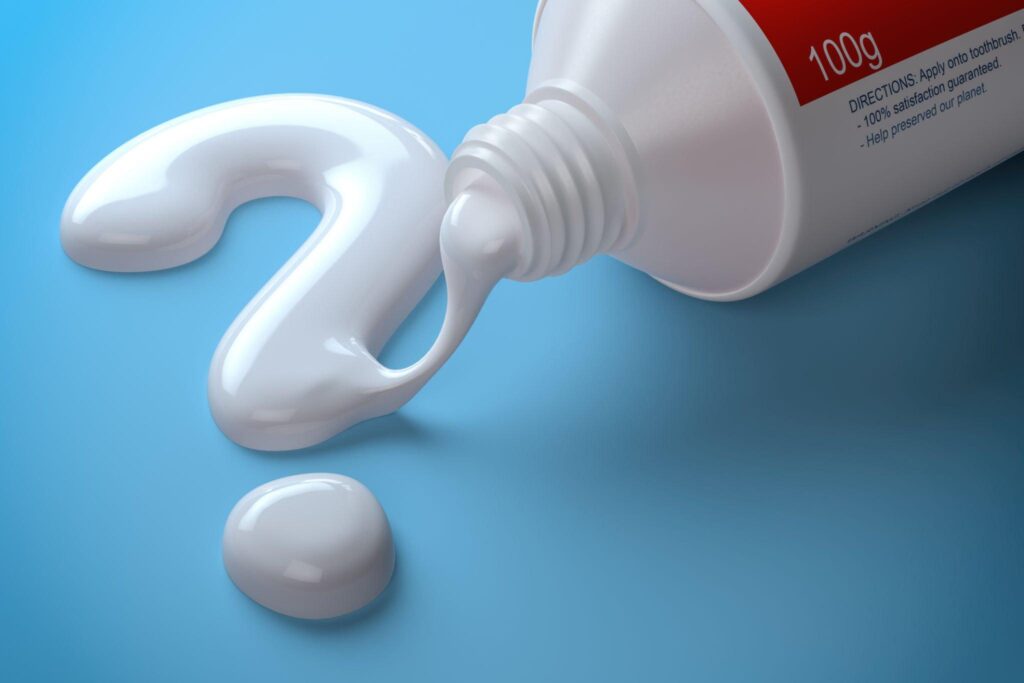
When it comes to taking care of your oral health while wearing braces, there are certain things you should be cautious about. One of those things is using whitening toothpastes. While these toothpastes may promise a brighter smile, they can cause potential issues when it comes to your braces.
The main concern with using whitening toothpastes with braces is that it can only whiten the exposed areas of the teeth. The brackets and wires of the braces cover a significant portion of the tooth surface, making it difficult for the whitening toothpaste to reach those areas. This can result in off-white areas on your teeth once the brackets are removed, which can be quite unattractive.
Instead of using whitening toothpastes with braces, it is best to focus on maintaining good oral hygiene. Brush your teeth thoroughly twice a day with fluoride toothpaste, and be sure to clean around the brackets and wires using a soft-bristled toothbrush. This will help remove plaque and food debris, keeping your braces clean and your teeth healthy.
Remember, the goal of orthodontic treatment is to achieve a straight and beautiful smile, and using whitening toothpastes with braces can hinder that goal. It’s best to wait until after your braces are removed to consider whitening options so that you can enjoy the full benefits of a confident and bright smile.
Ask an Orthodontist – FAQ
What is the most efficient method for flossing with braces?
The most efficient method for flossing with braces is to first thread the floss under the brace wire and around each tooth. Once the floss is in place, use a gentle sawing motion on the sides of each tooth and move the floss back and forth to reach the gumline. This will help ensure that all areas of the teeth and braces are properly cleaned. Additionally, using a water flosser can also be an effective way to remove food particles stuck between teeth and braces.
What is the trick to flossing with braces?
Flossing with braces can be tricky, but a few simple steps can make the process much easier. The first step is to use a floss threader to thread the floss under the brace wire and around each tooth. A water flosser can also be used to dislodge and remove food particles stuck between teeth and braces. As you floss, use a gentle sawing motion on the sides of each tooth and move the floss back and forth to reach the gumline. Lastly, take your time and be sure to clean around all areas of the braces, including the brackets and wires.
Is it OK to not floss with braces?
No, it is not OK to not floss with braces. Flossing is an important part of any oral health care routine, and is especially important when wearing braces. Braces create small crevices in the teeth where food particles and plaque can get stuck, leading to tooth decay and gum disease if left unchecked. Additionally, flossing with braces helps remove any debris from under the braces and around the gumline to keep your smile healthy.
Does flossing speed up braces?
Flossing does not necessarily speed up the process of wearing braces, but it does play an important role in maintaining oral health throughout orthodontic treatment. By removing food, bacteria, and plaque that can get stuck around the brackets and wires, flossing can help reduce the risk of tooth decay and gum disease. Additionally, flossing helps remove any debris from under the braces , which can help prevent staining and discoloration of the teeth.
Is water flossing enough with braces?
Water flossing can be an effective alternative to traditional flossing when it comes to cleaning around braces. The pressurized water from the water flosser is able to dislodge food particles and plaque, which can then be rinsed away with a stream of water. However, it is important to also use traditional flossing methods in addition to water flossing. This will help ensure that all areas of the teeth and braces are adequately cleaned.
What happens if you don’t floss when you have braces?
Failing to floss when wearing braces can have serious consequences. When food particles and plaque get stuck in the brackets and wires, it can lead to tooth decay and gum disease. Additionally, a buildup of debris on the surface of the braces can cause discoloration and staining of the teeth, which may not be able to be removed even after the braces are removed. Furthermore, neglected oral hygiene can lead to a longer treatment time and poorer results.
What is the easiest way to floss with braces?
The best way to floss with braces is to use a floss threader. This tool allows you to easily thread the floss under the brace wire and around each tooth. Once the floss has been threaded, use a gentle sawing motion on the sides of each tooth and move the floss back and forth to reach the gum line. For those who struggle with traditional flossing, a water flosser can also be used to dislodge and remove food particles stuck between teeth and braces.
What toothpaste should you use with braces?
When wearing braces, it is important to use toothpaste specifically designed for orthodontic treatment. These toothpastes are formulated with special ingredients that help remove plaque and food particles from around the brackets and wires of the braces. Additionally, they contain ingredients that can help reduce staining and discoloration of the teeth caused by braces. It is also important to look for a toothpaste that contains fluoride, as this helps maintain strong and healthy teeth.

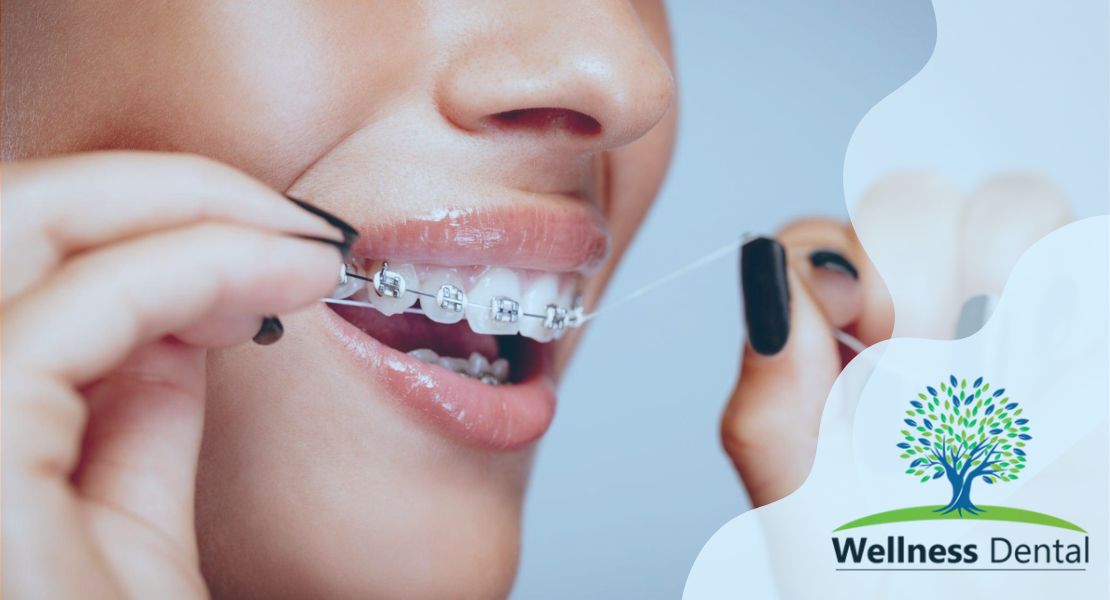


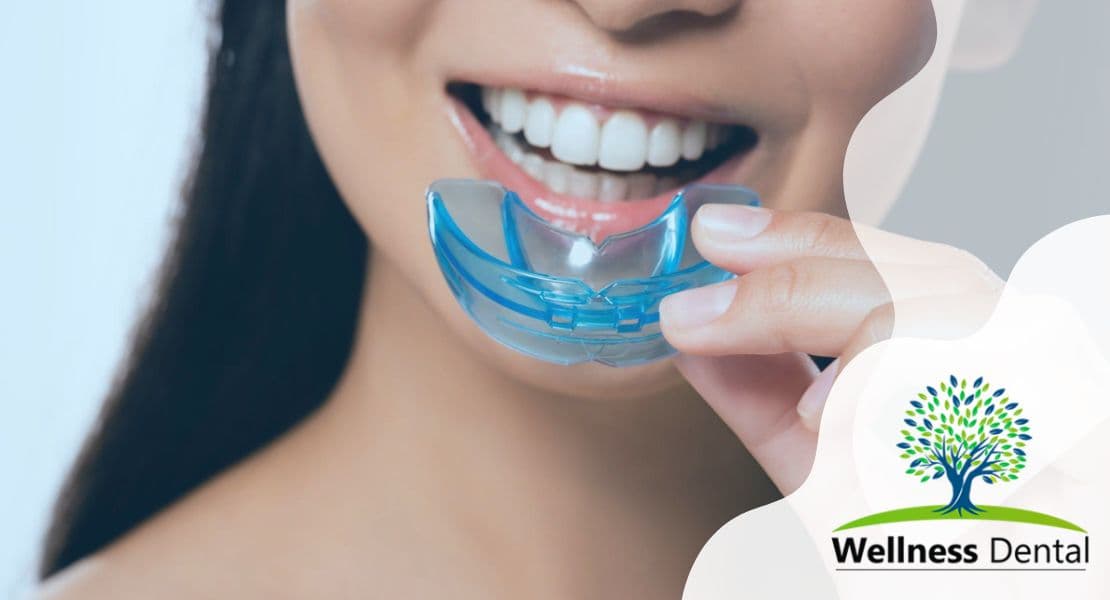

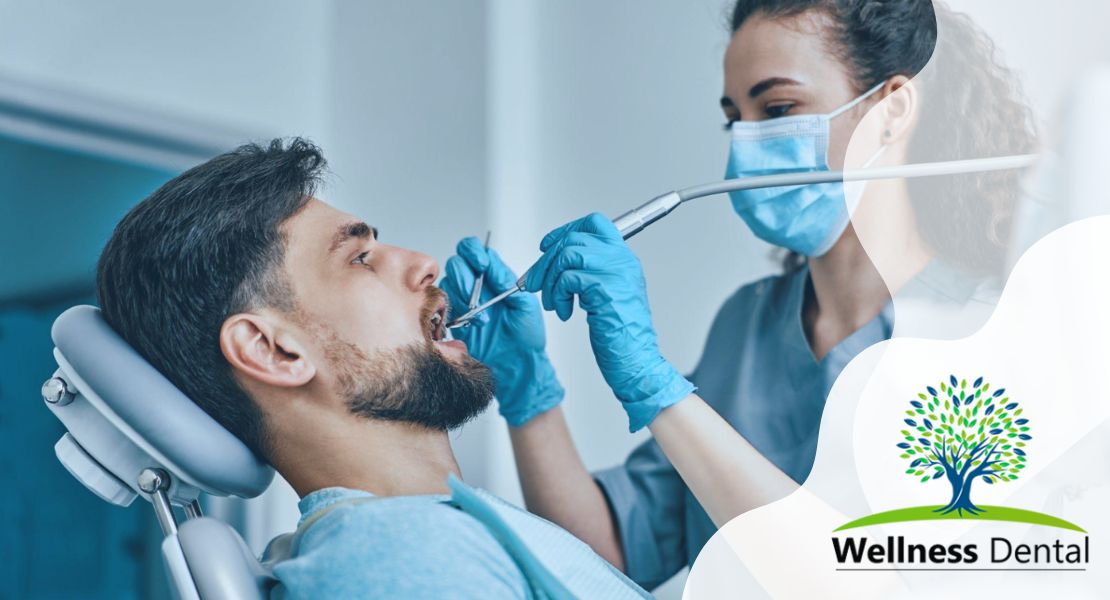
Thank you. It provided valuable guidance on maintaining oral hygiene while wearing braces. I found the information helpful and appreciate the clinic’s commitment to patient education.